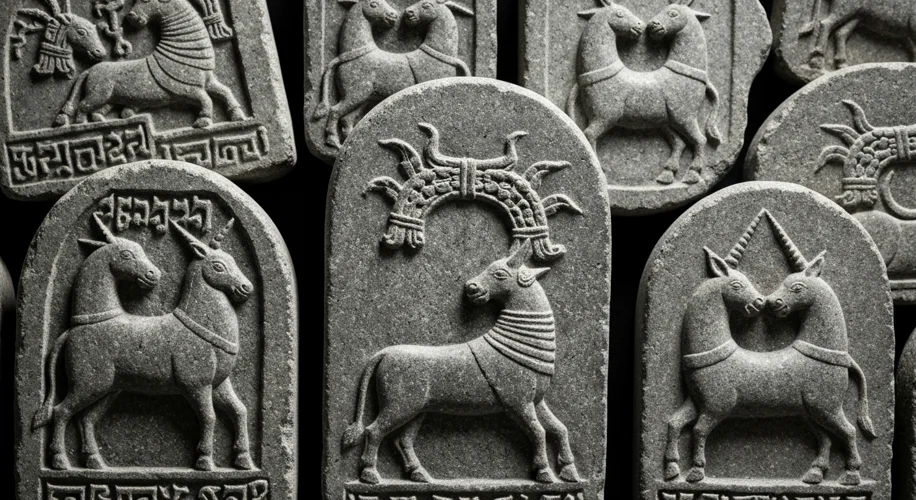The air in the sun-baked plains of the Indus River basin, over 4,500 years ago, hummed with a life that would eventually fade into the mists of time. Imagine a bustling metropolis, a city far grander and more organized than anything that had existed before it in this part of the world. This was the Indus Valley Civilization, one of humanity’s earliest urban marvels, a civilization that rose, flourished, and eventually vanished, leaving behind a tantalizing mystery that continues to captivate historians and archaeologists.
Picture this: streets laid out in a precise grid, lined with houses constructed from uniform, baked bricks. Sophisticated drainage systems, a testament to advanced urban planning, channeled waste water away from living areas. Great public baths, like the one at Mohenjo-daro, suggest a society that valued ritual cleanliness and communal life. Granaries, vast and meticulously built, indicate a well-organized agricultural system capable of supporting a large population.

This civilization, also known as the Harappan Civilization after Harappa, one of its major sites, spanned a vast area, from the shores of the Arabian Sea to the foothills of the Himalayas, flourishing between roughly 2600 and 1900 BCE. Its people, though their exact identity remains unknown due to their undeciphered script, were clearly skilled artisans and traders. They crafted exquisite pottery, intricate seals often depicting animals and unknown scripts, and beautiful jewelry from materials like carnelian and lapis lazuli. Evidence of trade links has been found with Mesopotamia, suggesting these ancient city-dwellers were connected to a wider world.
But what truly sets the Indus Valley Civilization apart is its apparent uniformity and order. Unlike many other early civilizations, there’s a striking lack of monumental palaces or grand temples that would suggest a ruling elite or powerful priesthood. The focus seems to be on civic amenities and a shared way of life. The standardization of brick sizes across vast distances points to a level of centralized control or at least a highly influential cultural consensus. It was a society that valued order, hygiene, and perhaps, a more egalitarian structure than many of its contemporaries.

Then, as mysteriously as it arose, the civilization began to decline. Around 1900 BCE, the great cities started to empty. The sophisticated urban infrastructure fell into disrepair. The characteristic script vanished. The vibrant culture that had pulsed through cities like Mohenjo-daro and Harappa, Lothal and Dholavira, seemed to simply cease to be.
What caused this dramatic end? The debate rages on, with scholars proposing a variety of theories. One of the most compelling is the impact of climate change. Evidence suggests that the monsoon patterns that sustained the Indus River system began to shift, leading to prolonged droughts and floods. The mighty river, the lifeblood of the civilization, may have changed its course, rendering the great cities uninhabitable.
Another theory points to environmental degradation caused by the civilization itself. Extensive deforestation for fuel to bake bricks and intensive agriculture might have led to soil erosion and desertification, making the land unsustainable. Some scholars have also proposed internal factors, such as social unrest or the breakdown of trade networks. And for a time, the idea of an invasion by Indo-Aryan tribes was popular, but archaeological evidence for a violent conquest is scarce.

The legacy of the Indus Valley Civilization, though its cities are now ruins, is profound. It stands as a testament to the ingenuity and organizational capacity of early humans. It reminds us that complex urban societies can arise and flourish in diverse environments, and that their decline can be as complex and multifaceted as their rise. The undeciphered script remains a tantalizing puzzle, a locked door to understanding their thoughts, beliefs, and stories. Perhaps one day, its secrets will be unlocked, and we will hear the true voices of this lost world, echoing across the ages.
The disappearance of the Indus Valley Civilization is more than just an archaeological mystery; it’s a cautionary tale about the delicate balance between human civilization and the environment, and a powerful reminder of the impermanence of even the most advanced societies. It compels us to look closely at our own world, to understand the forces that shape our destinies, and to listen to the whispers of the past, lest we, too, fade into silence.

